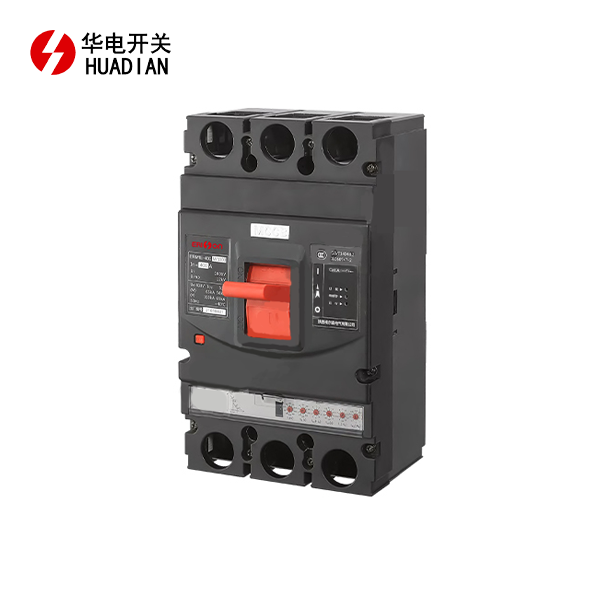Understanding the ERM1E Plastic Case Circuit Breaker
Key Features of the ERM1E Plastic Case Circuit Breaker
The ERM1E plastic case circuit breaker is a sophisticated device designed to safeguard electrical systems. It boasts a compact design, making it suitable for various applications where space is at a premium. The breaker's plastic casing provides excellent insulation properties, contributing to its overall safety and reliability. Additionally, the ERM1E model often incorporates advanced trip mechanisms, ensuring rapid response to electrical faults and minimizing potential damage to connected equipment.
Applications of ERM1E Plastic Case Circuit Breakers
ERM1E plastic case circuit breakers find widespread use across numerous sectors. In residential settings, they protect household circuits from overloads and short circuits. Industrial applications benefit from their robust construction and ability to handle higher currents. Commercial buildings rely on these breakers to maintain electrical safety in offices, retail spaces, and other facilities. The versatility of ERM1E breakers makes them invaluable in power distribution systems, where they play a crucial role in preventing electrical accidents and equipment damage.
Advantages of Using ERM1E Plastic Case Circuit Breakers
Opting for ERM1E plastic case circuit breakers offers several advantages. Their compact size allows for efficient use of panel space, enabling more comprehensive protection in smaller enclosures. The durable plastic casing resists environmental factors, ensuring longevity and consistent performance. These breakers often feature adjustable trip settings, allowing for customization based on specific circuit requirements. The incorporation of thermal-magnetic trip units provides dual protection against both overloads and short circuits, enhancing overall system safety.
The Concept of Electrical Isolation
Definition and Importance of Electrical Isolation
Electrical isolation refers to the complete separation of a circuit or device from its power source, ensuring no electrical connection exists between them. This process is paramount for safety during maintenance, repairs, or modifications to electrical systems. Proper isolation prevents accidental energization, protecting workers from electric shocks and equipment from unexpected damage. In industrial settings, isolation is often a legal requirement, highlighting its critical role in workplace safety protocols.
Methods of Achieving Electrical Isolation
Several methods exist for achieving electrical isolation. Dedicated isolating switches provide a visible break in the circuit, offering clear confirmation of disconnection. Some systems employ removable links or fuses, which physically separate circuits when removed. In high-voltage applications, air-break switches create a substantial gap to prevent arcing. For sensitive electronic equipment, galvanic isolation techniques using transformers or optocouplers can provide both electrical separation and signal transmission.
Safety Considerations in Electrical Isolation
When implementing electrical isolation, safety must be the foremost concern. Proper lockout/tagout procedures ensure that isolated circuits remain de-energized during work. Personal protective equipment (PPE) is essential for those performing isolation tasks. Regular testing of isolation devices and procedures helps maintain their effectiveness. It's crucial to consider potential stored energy in capacitors or inductors, which may require additional steps for safe dissipation. Training personnel in correct isolation techniques and verifying isolation before commencing work are vital safety practices.
Circuit Breakers and Isolation: Clarifying the Distinction
Limitations of Circuit Breakers in Providing Isolation
While circuit breakers, including the ERM1E plastic case circuit breaker, are essential for electrical protection, they have limitations when it comes to isolation. The primary function of a circuit breaker is to interrupt current flow during fault conditions, not to provide complete electrical separation. Even when in the "off" position, circuit breakers may not create sufficient physical separation to ensure isolation. Residual voltage can remain on the load side of the breaker, posing potential safety risks. Additionally, the internal mechanisms of circuit breakers are not designed to withstand the rigorous standards required for isolation devices.
Supplementary Measures for Achieving Proper Isolation
To achieve proper isolation when working with systems protected by ERM1E plastic case circuit breakers or similar devices, supplementary measures are necessary. Installing dedicated isolating switches upstream of the circuit breaker provides a reliable means of disconnection. Some systems incorporate withdrawable circuit breakers, which can be physically removed from their housings to create a visible break. Using voltage indicators and testing equipment to verify the absence of voltage after disconnection adds an extra layer of safety. In some cases, temporary insulating barriers or grounding devices may be employed to ensure complete isolation during maintenance procedures.
Best Practices for Ensuring Electrical Safety
Implementing best practices for electrical safety when dealing with circuit breakers and isolation is crucial. Regular maintenance and testing of both circuit breakers and isolation devices help ensure their reliability. Developing and adhering to comprehensive lockout/tagout procedures prevents accidental re-energization of isolated circuits. Training personnel in the correct use of isolation equipment and the limitations of ERM1E plastic case circuit breakers enhances overall safety. Conducting risk assessments before undertaking any electrical work allows for the identification and mitigation of potential hazards. Utilizing appropriate personal protective equipment and following established safety protocols are non-negotiable aspects of electrical work.
Conclusion
In conclusion, while the ERM1E plastic case circuit breaker is a vital component in electrical protection, it does not inherently provide isolation functionality. Understanding the distinction between circuit breaking and isolation is crucial for maintaining electrical safety. Proper isolation requires additional measures and devices designed specifically for that purpose. By implementing comprehensive safety practices, utilizing appropriate isolation methods, and recognizing the limitations of circuit breakers, electrical systems can be managed safely and effectively. Always prioritize safety and consult with qualified professionals when dealing with electrical systems and isolation procedures.
Call to Action
For more information about ERM1E plastic case circuit breakers and our range of electrical protection solutions, please contact us at austinyang@hdswitchgear.com/rexwang@hdswitchgear.com/pannie@hdswitchgear.com. Our team of experts is ready to assist you in selecting the right products for your electrical safety needs and provide guidance on proper isolation techniques.





